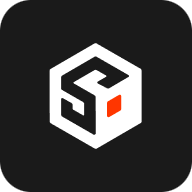

Fuel Network
FUEL
Average
5.3K
5.74K
8.61K
Average
71
52
67
Average
10
5
10
Average
12
7
14

Fuel Network Timeline

Fuel Network Token unlock

Fuel Network Token allocation
Fuel Network BasicReport a Data Error

Fuel Network Info
Fuel Network Team
Fuel Network Intro
Fuel Network is a next-generation Layer 2 modular execution layer designed to enhance blockchain scalability by decoupling execution from consensus. Unlike traditional monolithic blockchains, this architecture supports parallel transaction processing, significantly increasing throughput and reducing network congestion.
At the core of Fuel is the Fuel Virtual Machine (FuelVM), a custom-built virtual machine based on the UTXO model for transaction validation. Its design enables parallel execution while drastically lowering gas fees, allowing developers to build complex decentralized applications (dApps) with greater efficiency.
Fuel introduces Sway, a domain-specific programming language inspired by Rust and tailored for blockchain development. Sway offers a clean syntax and powerful tools to help developers create secure and efficient smart contracts. It is also fully compatible with Solidity, ensuring seamless project migration and enhancing the developer experience.
The Fuel ecosystem includes various decentralized applications, such as Mira Exchange (an efficient automated market maker or AMM) and Swaylend (the network's first lending protocol). These applications demonstrate Fuel's ability to support diverse use cases with high performance and security.
Fuel's modular design positions it as a pivotal player in the evolution of Layer 2 solutions, balancing scalability, performance, and security while empowering developers to build the future of decentralized applications.
Fuel Network Unlock & AllocationReport a Data Error
Fuel Network Timeline
Fuel Network Token unlock
Fuel Network Token allocation
Q&A about Fuel Network Tokenomics
Explore the tokenomics of Fuel Network (FUEL) and review the project details below.
What is the allocation & supply schedule for Fuel Network (FUEL) ?
Fuel Network introduces FUEL as its native token, with an initial total supply of 10 billion tokens. The tokenomics are designed to foster inclusivity and shared growth within the ecosystem, ensuring both long-standing contributors and newcomers have fair access. Over 51% of the total supply will ultimately be allocated to the community, the ecosystem, and research and development (R&D), reflecting Fuel’s commitment to creating a decentralized and sustainable platform.
Token Allocation
- Community Expansion (20% - 2 billion tokens):Allocated for incentives, programs, campaigns, and community growth initiatives, these tokens are aimed at driving Fuel's adoption and engagement. Distribution starts immediately upon launch.
- Ecosystem and Research & Development (15.5% - 1.55 billion tokens):Dedicated to the establishment of the sequencing network, ecosystem development, and technological R&D. These tokens are available for immediate use.
- Ecosystem and R&D 24 (15.5% - 1.55 billion tokens):Locked tokens that are released block by block over 24 months. They can be staked to support ecosystem initiatives and provide Layer 2 incentives.
- Contributors 24 (6% - 0.6 billion tokens):Reserved for past and present contributors to Fuel, released over a 24-month linear schedule.
- Contributors 48 (9.8% - 0.98 billion tokens):Allocated to core project contributors, with a 48-month linear release.
- Purchasers (33.1% - 3.31 billion tokens):Distributed to token purchasers from 2020 to 2022, with a 24-month linear release schedule.

Inflation
Fuel Network employs a 3% annual inflation rate, configured and governed by the sequencer validator set. This inflation is designed to support the network's sustainability and long-term growth.
Vesting and Unlock Schedule
- Community Expansion and Ecosystem & R&D allocations are unlocked immediately to ensure active use in ecosystem development and community engagement.
- Locked tokens for Ecosystem and R&D, Contributors 24, and Contributors 48 follow block-by-block linear release schedules over 24 and 48 months, depending on the allocation.
- Tokens allocated to Purchasers are also released over 24 months but cannot be staked while locked.



